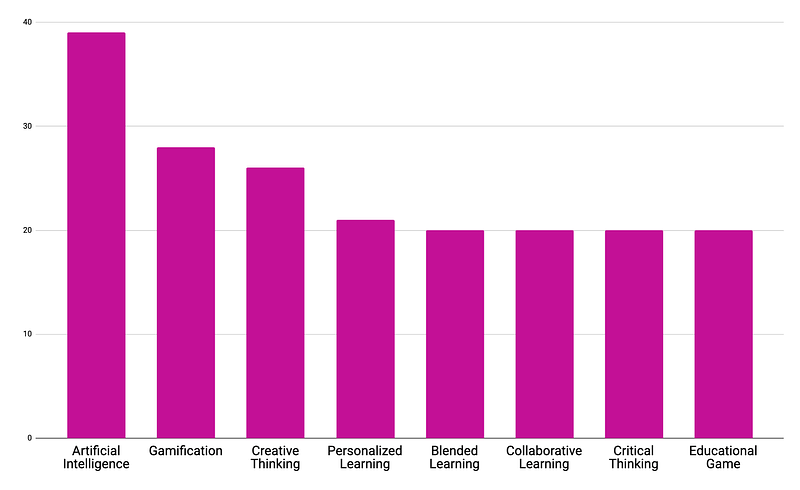Exploring Gamified Innovations
HundrED embarked on a journey to find out the most scalable innovations in the field of gamified curricula in 2023.
"We wanted to push beyond the boundaries of gamification in ed tech games and explore the broader curricular perspective," explains Deborah Mensah-Bonsu, Give Back at Supercell, a Finnish gaming company and HundrED’s partner in the Gamified Curricula project.
Deep-diving into the intersection of learning and digital play, the Gamified Curricula project sought practical examples of innovations that bring the benefits of gamified curricula to upper secondary education, specifically students from marginalised groups aged 16-25. The selection criteria also emphasized fostering mental health, belonging, and empathy, focusing on whole individuals rather than just technical skills, fusing physical and digital, and bridging the gap between education and working life, especially in the gaming and entertainment industries.
A global call for innovation submissions was open from April to June 2023 to which almost 200 submissions in total were received from all continents.
Picture 1: All 198 innovations by the countries they were submitted from. The stronger the colour, the more submissions were received from the country in question. The country with the most submitted innovations was India.
The submissions demonstrate how gamified curricula is being used in programs that are not part of traditional schooling, for example toward career development, restorative justice for youth, sustainability, and e-sports.
“What the submissions have shown us is that teachers are currently in the process of gamifying curricula. Additionally, comprehensive gamification is uncommon in public schools. This might be due to a mix of teacher interest, the effort needed for integrating game mechanics, and the necessity for curricula, gradually incorporating game elements into lessons, rather than fully transforming existing curriculum coherence among teachers and schools,” proposes Crystal Green, Research Director at HundrED.
“Gamifying a curriculum adds new levels of complexity to teaching. It's about figuring out how all of those game elements can fit into what you are teaching and how you teach,” underlines Mariah Voutilainen, Research coordinator at HundrED.
The themes of the innovations ranged from design thinking to gender equality using methods like after-school programs, collaborative learning and assessment.

Picture 2: The most-used category tags in the innovations submitted. Artificial intelligence was tagged in almost 40 innovations, followed by gamification, creative thinking and personalised learning in over 20 innovations.
“It is really interesting to look at the submissions and think about what a curriculum really means. It is about reorienting the way people experience education. So it’s not entirely skill-based but more about how you have designed the learning experience to encourage creativity and play,” says Green.
Blending Digital and Physical
HundrED and Supercell shortlisted 23 innovations that met the selection criteria. The curricula aim to cater to a range of learning environments, including entirely virtual, entirely in-person, and hybrid approaches, allowing students to engage based on their accessibility. One of the innovations also focuses on helping teachers to gamify their teaching through easy-to-use resources.
While most innovations incorporate a blend of digital and physical elements, the subject matter varies widely, from history and STEM to design and sustainability, leading to diverse implementation strategies. There is also diversity in the focus on specific age groups, and a very unique case of tailoring the curricula needs of young inmates.
The shortlisted innovations’ curricula designs focus on a holistic approach to learning, integrating various facets such as facilitation, discussion, collaboration, and reflection, to provide a comprehensive educational experience.
“Curricula are, or should be, holistic instead of specific and that is definitely a challenge when considering all the aspects that have to already be incorporated into teaching to make it game-like,” says Mensah-Bonsu.
A common theme is the emphasis on experiential learning, where students engage in hands-on activities, simulations, and real-world tasks that apply knowledge gained from digital resources.
Scaling Impact
The following shortlisted innovations have been reviewed by an advisory board of 65 education experts around the world and the final selection will be announced in 2024.
Shortlist:
- Biophilic Education Alliance (BE ALL)
- Brixilated Builders Academy
- Change Architects
- Code Mitra
- DiBL
- Digital Influx. The world's first EdTech company to teach young people User Experience (UX) design
- EMC² Learning
- Enterprise Adventure
- Games and Hands-on Activities for Future Ready Maker Education in 21st Century
- gameSTEM
- How I would like to be (Come vorrei essere) - Summer school in a juvenile prison
- imagi
- League for Green Leaders
- LearnCard
- Lorugames.com
- Lumi Network
- PathWork
- Scholastic Esports
- Seppo
- Simcoach Skill Arcade
- Stages of Autonomy: growing the skills of becoming a lifelong learner
- Teacher-Gamer Revolution - using Role-Playing Games (RPGs) and World-Building in Education
- VinciU
“Curricula is something that is decided on many levels and in many different ways in different countries. That adds its own spice into thinking of scalability and tailoring these gamification strategies to align with diverse educational landscapes, local contexts, pedagogical goals, and cultural considerations” Green concludes.
More on the topic
Gamified Curricula Spotlight page
